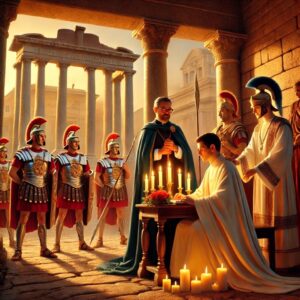Valentine’s Day, celebrated every February 14, is widely recognized as a day of love, romance, and affection. However, its origins are deeply rooted in ancient history, blending mythology, religious traditions, and centuries-old customs. The holiday’s beginnings can be traced back to both Roman pagan festivals and early Christian martyrs, evolving over time into the modern celebration we know today.
One of the earliest influences on Valentine’s Day was the ancient Roman festival of Lupercalia, held in mid-February. This fertility festival was dedicated to Faunus, the Roman god of agriculture, and included rituals to ensure prosperity and purification. Young men would draw the names of women in a lottery, forming temporary romantic partnerships that sometimes led to marriage. As Christianity spread, the Church sought to replace pagan holidays with Christian ones, leading to the association of Lupercalia with the feast of St. Valentine.
The name Valentine itself comes from multiple historical figures. The most well-known St. Valentine was a priest in 3rd-century Rome who defied Emperor Claudius II’s ban on marriages for young soldiers. Believing in love’s power, Valentine continued to perform secret marriages. When his actions were discovered, he was imprisoned and later executed on February 14 around the year 270 AD. According to legend, before his execution, he sent a letter to a young woman he had befriended, signing it “From your Valentine”, an expression still used today.
By the Middle Ages, St. Valentine had become the patron saint of lovers, and February 14 was associated with courtly love in Europe. The poet Geoffrey Chaucer played a significant role in romanticizing the day, writing about birds choosing their mates on “Valentine’s Day.” This idea caught on, and over time, people began exchanging love notes and tokens of affection.
By the 19th century, mass-produced Valentine’s cards became popular, thanks to advances in printing technology. In modern times, Valentine’s Day has evolved into a multi-billion-dollar industry, with chocolates, flowers, and heartfelt messages exchanged worldwide. Despite its commercialization, the holiday continues to celebrate love in all its forms, reminding us of the deep connections that bind us together.
Though the origins of Valentine’s Day are steeped in history, its true meaning endures: a celebration of love, devotion, and the timeless human desire to connect with one another.

